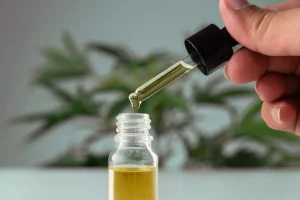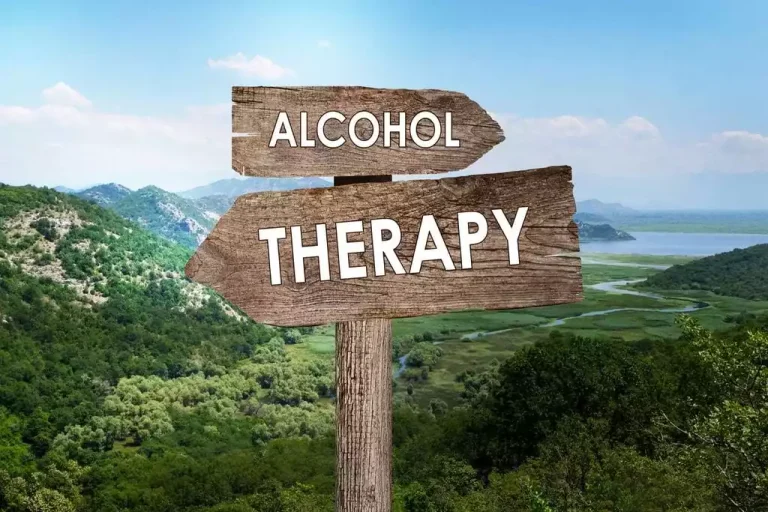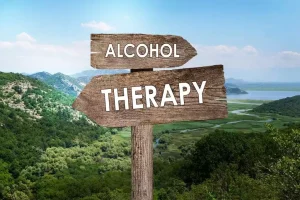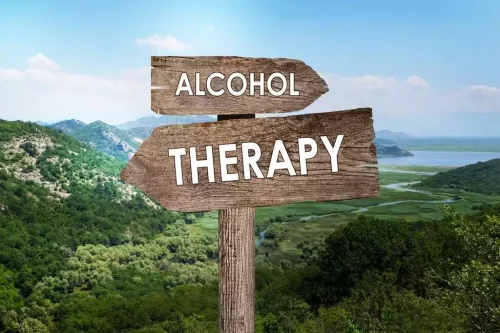
For example, serotonin can increase the activity of GABAergic neurons in the hippocampal formation (Kawa 1994), a part of the brain that is important for memory formation and other cognitive functions. Consequently, alcohol’s effects on serotonin may alter the activity of GABAergic neurons in the hippocampal formation. These changes may disrupt cognition and possibly contribute to alcohol-induced memory loss and impaired judgment. The binding of serotonin to its receptors initiates a series of biochemical events that converts the extracellular, chemical signal into an intracellular signal in the recipient cell. For example, the interaction of serotonin with one type of receptor stimulates the formation of small molecules (i.e., second messengers) within the cell.
1. The brain reward system: the mesocorticolimbic dopamine system
- Systematic chronic drinking, on the other hand, depletes the quantity of dopamine in your brain over time, leading to a need for more alcohol and building the framework for alcohol addiction or dependency.
- The primary neurotransmitter regulating the rewarding sensation was determined to be dopamine 11.
- One prominent example of a psychological disorder that appears to involve inappropriate serotonin use in the brain is depression (Baldessarini 1996); some of the most effective antidepressant medications act on the serotonin transporters to prolong the neurotransmitter’s activity.
Systematic chronic drinking, on the other hand, depletes the quantity of dopamine in your brain over time, leading to a need for more alcohol and building the framework for alcohol addiction or dependency. Eligible studies included those involving individuals with occasional or excessive alcohol consumption, including AUD. Peer-reviewed journal articles, published abstracts, and ongoing clinical trials providing sufficient data were included. In a recent study published in the eClinicalMedicine, a group of researchers assessed the association between glucagon-like peptide-1 receptor agonist (GLP-1 RA) use and changes in alcohol consumption, along with their impact on alcohol-related outcomes and brain cue reactivity. Over time, excessive drinking can lead to mental health problems, such as depression and anxiety. Alcohol abuse can increase your risk for some cancers as well as severe, and potentially permanent, brain damage.

Effects of Serotonin Uptake Inhibitors
Stimulants that inhibit the actions of adenosine include caffeine as well as theophylline, a chemical found in tea. Animal studies have shown that caffeine and theophylline reduce the sedative and motor-incoordinating effects of alcohol (Dunwiddie 1995), although these substances do not alleviate symptoms of intoxication in humans. Biochemical evidence indicates that short-term exposure to alcohol of nerve cell cultures in the laboratory increases the levels of adenosine that can interact with adenosine receptors.

2. Atypical dopamine D2 receptor antagonists

Here, we aim to review the animal and human data describing the role of dopamine and the mesolimbic dopamine system during acute and chronic alcohol exposure. Finally, preclinical and clinical studies evaluating the potential of alcohol and dopamine available dopaminergic agents as well as indirect dopamine modulators as novel medications for alcohol dependence are discussed. Evidence suggests that the brain attempts to restore equilibrium after long-term alcohol ingestion (see figure).
Your Brain on Alcohol
The consequences of the alterations in dopamine signaling we observed may be numerous. Neurobiologically, striatal dopamine alters intracellular signaling that affects synaptic plasticity 42. Activation of D1 dopamine receptors increases the excitability of the direct pathway medium spiny projection neurons (MSNs) 59, while D2 receptor activation inhibits GABAergic synaptic transmission within striatum through presynaptic actions on indirect pathway MSNs.

Microglia control escalation of drinking in alcohol-dependent mice: genomic and synaptic drivers
Finally, we found that blockade of nicotinic acetylcholine receptors inhibited evoked dopamine release in nonhuman primates. Altogether, our findings demonstrate that long-term alcohol consumption can sex-dependently alter dopamine release, as well as its feedback control mechanisms in both DS subregions. Alcohol dependence, a chronic relapsing psychiatric disorder, is a major cause of mortality and morbidity. The role of dopamine in alcohol‐induced reward as well in the development of alcohol dependence is reviewed herein. Both preclinical and clinical studies have suggested that alcohol activates the mesolimbic dopamine system (defined as a dopamine projection from the ventral tegmental area (VTA) to the nucleus accumbens (NAc, i.e. ventral striatum)) leading to a euphoric sensation.

These studies found that P rats have fewer 5-HT1A receptor molecules than do NP rats (DeVry 1995). We found that long-term alcohol consumption altered dorsal striatal dopamine release and uptake in a sex- and subregion-dependent manner. We further found that regulation of dopamine release by D2/3 dopamine autoreceptors was altered by long-term alcohol consumption in male, but not female, rhesus macaques regardless of abstinence status. These results are largely in agreement with the literature, though some disparities exist. For example, long-term alcohol self-administration resulted in decreased dopamine uptake rates in the dorsolateral caudate of male cynomolgus macaques 22, 24. This group also found no difference in the quinpirole-mediated inhibition of dopamine release between alcohol and control male cynomolgus macaques 24.
- Given the central role of dopamine in alcohol addiction, researchers are exploring potential treatments targeting the dopamine system for alcohol use disorders.
- A study has also investigated the effect of dopamine D2 receptor agonist administration into VTA on alcohol intake.
- It is likely that species, striatal subregion, and intake duration (6 months in the previous study versus 1 year in the present study) differences may account for many of the dissimilarities between studies.
- Alcohol interacts with serotonergic synaptic transmission in the brain in several ways.
- But as you drink more — and you don’t need to drink that much more — eventually, the enzymes that break down the alcohol get saturated.
One factor contributing to the development of AUD may be the change in synaptic signaling in the caudate and putamen that could contribute to a bias toward sensory-motor circuit control of behavior and inflexible alcohol consumption 33, 34. As an important regulator of behavioral output, dysregulation of dopamine neurotransmission is implicated in theories of AUD development 13, 16, 35. Acutely, in vivo alcohol administration dose-dependently increases cortical, mesolimbic, and nigrostriatal dopamine in rodents 36; an effect attributed to enhanced dopamine neuron firing 37. However, in rodent and macaque brain slices, an acute alcohol challenge following chronic alcohol exposure (inhalation or drinking) decreases dopamine release in the nucleus accumbens (NAc) in vivo and ex vivo preparations 24, 38. Beyond the NAc, chronic alcohol exposure has varied effects on dopamine release that are brain region and species dependent. Throughout the striatum, dopamine release is generally decreased following chronic alcohol use or treatment.
- The involvement of the dopamine D1, D3, D4 and D5 receptors falls outside the scope of the present review but has previously been reviewed elsewhere 20.
- Alcohol alters these processes in rodents, and it is believed that the development of alcohol use disorder involves changes in DS dopamine signaling.
- Serotonin, along with other neurotransmitters, also may contribute to alcohol’s intoxicating and rewarding effects, and abnormalities in the brain’s serotonin system appear to play an important role in the brain processes underlying alcohol abuse.
- It is noteworthy that the ACC and FIC––the prefrontal brain regions for which increased FC following P/T depletion mediated AB in this study––are major hubs of the salience network that is involved in conditioning and assigning incentive salience to drugs and drug-related cues 112.
For example, mesolimbic dopamine projections from the ventral tegmental area (VTA) to the NAc play a critical role in both Pavlovian conditioning and the expression of conditioned responses 16, 17. In addition, fast dopamine release events (dopamine transients) commence at the onset of a conditioned cue 18, 19. Pavlovian conditioned responses to alcohol cues in rodents provide a model of alcohol AB that allows direct measurements and mechanistic manipulations of the neural circuitry underlying AB 20,21,22. Taken together, preclinical evidence indicates a key role for dopaminergic pathways in mediating responses to alcohol-related cues 23,24,25.
EFhd2/Swiprosin-1 is a common genetic determinator for sensation-seeking/low anxiety and alcohol addiction
D2 receptors bind with inhibitory G protein and thus reduce the production of AC and resulting cAMP. Some experiments found no difference in DA release in the NAc after intraperitoneal injection of ethanol between P and NP rats. For example, Yoshimoto and colleagues11 and Gongwer and colleagues23 found that although HAD and LAD rats differed in their basal level of extracellular DA, they did not differ in CNS DA release after intraperitoneal injection of ethanol. Similarly, Kiianmaa and colleagues28 found no differential increase of extracellular DA concentration in the NAc between AA and ANA rats after microdialysis of ethanol. These varying results may be due to the use of different animal models or different research protocols.






